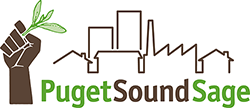Gentrification is in full swing in Rainier Valley.
Over the last 10 years, demographic data reveals a clear trend of gentrification in Southeast Seattle. In King County, people of color populations grew 47%, while the white population shrank 2%. However, in Rainier Valley people of color populations only grew 5%, while the white population increased 17 %.
The presence of light rail in Rainier Valley is likely perpetuating gentrification in the coming years. Since construction of the light rail, land values and rents around the stations have increased dramatically. Accessed land values surrounding the Othello station increased by an average of 513% since 1999. Additionally, the presence of new buildings around the light rail stations helped increase the average monthly rent in Rainier Valley from $700 in 2008 to $1,000 this year for apartment buildings with 20 or more units . The acceleration of gentrification with light rail is a trend that has been seen in other major urban areas .
What does this mean for South Seattle residents? To answer that question it is important to consider that gentrification in and of itself does not necessarily lead to current residents being pushed out of neighborhoods, or the rise of racial homogeneity. It is when gentrification is mixed with other destabilizing factors that displacement occurs (read our post on gentrification and displacement.)
It also means that it will be critical for policy-makers to take proactive steps to ensure that transit-oriented development (TOD) takes race into account, and prioritizes the needs of families and communities of color. For more information on policy solutions that help address displacement see our article on the Five Ways Seattle Policy Makers Can Promote Racial Equity in Southeast Seattle.
For more information, read the full report Transit Oriented Development that’s Healthy, Green & Just.

